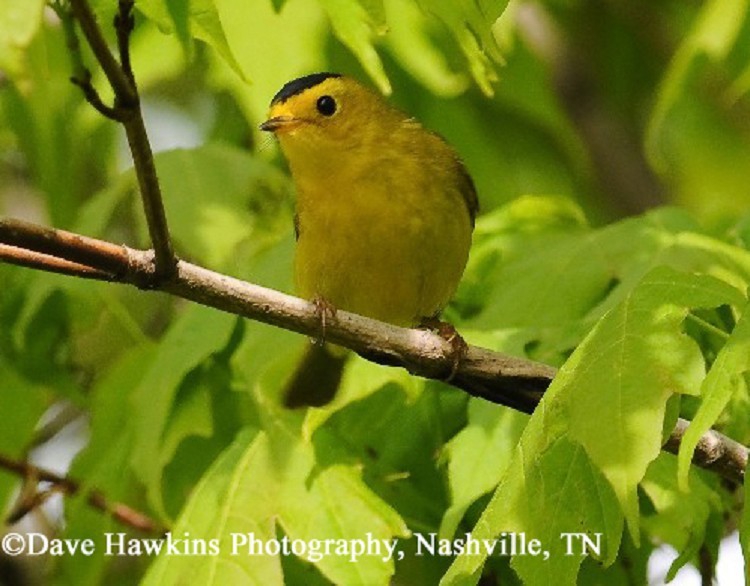Wilson's Warbler, Cardellina pusilla
Both common and scientific names of this small warbler Wilson's Warbler, Cardellina pusilla recognize the early ornithologist Alexander Wilson who first described this species in 1811. He apparently named the bird after himself.
Wilson's Warbler has a very large breeding range, which extends across Canada and Alaska and south through the western United States. It is found in Tennessee in the spring and fall as it travels to and from its wintering grounds in Mexico and Central America.
The Wilson's Warbler is most likely to be seen in shrubby thickets and edge habitats from early May to late May in the spring, and in the fall from early September to early October.
Description:
This small songbird is olive-green above and yellow below, with a yellow face, and plain dark wings and tail. The male has a black crown patch, which is greatly reduced or missing entirely in the female. Juvenile birds are similar to females but duller.
Length: 4.75"
Wingspan: 7"
Weight: 0.27 oz
Voice: Song is a series of 10 to 15 rather unmusical, chatter-like notes, chchchchch, dropping in pitch toward the end.
Similar Species:
- Yellow Warbler has yellow edges to wing feathers and yellow tail spots.
- Female Hooded Warbler has white tail spots.
- Orange-crowned Warbler is duller overall, has a thin, dark eye-line, and is often somewhat streaked below.
Habitat: During migration found in shrubby thickets, woodland edge, and semi-open areas, often near water.
Diet: Insects and occasional berries.
Nesting and reproduction: Wilson's Warbler has not been documented nesting in Tennessee.
Status in Tennessee: Uncommon migrant. Found in spring from early May to late May, and in the fall from early September to early October.
Fun Facts:
- The plumage of the Wilson's Warbler becomes brighter as you go from the eastern part of the range to the west. The Pacific coast populations have the brightest yellow foreheads and faces.
- Wilson's Warbler is easier to observe than many other warblers; it has little fear of humans, and forages on the outsides of leafy branches, often catching flying insects on the wing like a flycatcher.
Best places to see in Tennessee: Weedy and shrubby thickets and in wooded areas with dense underbrush in Middle and East Tennessee during spring migration.
